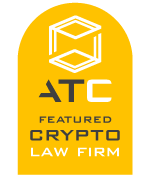
If you have been following our start-up series, you will have already planned for your moment as well as learned about corporate structure.
The next question we usually get is a big one: “WHAT IS THE BEST WAY TO DRAW MONEY FROM MY CORPORATION?” There areactually several ways to take money out; the “best” one all depends on how and from where you are CURRENTLY receiving income. It is important you discuss these options with your lawyer and accountant before drawing from your corporation as the tax consequences are fact-specific.
People often forget that “you” are not the same as “the corporation”, even if you are the sole officer, director and shareholder. The corporation is a separate person under the law. However, as a shareholder of a corporation, there are a number of ways you can transfer money from the corporation to yourself:
Dividends are generally classified as “income from investment” to the person who is receiving them and are taxed as income (the dividend gets tacked onto your income from the year). A dividend must be evidenced by corporate documents including a resolution of the directors..
2. Salary. A corporation can employ a shareholder and pay him/her a salary. This salary is tax deductible from the profits of the corporation but it must be reasonable, and the company must withhold all of the standard employee remittances (Income Tax, Canada Pension Plan (CPP) and Employment Insurance(EI) premiums) before they pay out the salary. Owner-operators can be EI exempt.
Salary is classified as “income from employment” to the person who is receiving it and it is taxed at the graduated rates. All employment arrangements must be set up with proper documentation especially if you are planning to hire yourself, a family member or other closely related person. We recommend having a properly executed shareholder agreement and employment agreement to evidence the legitimacy of the employment.
3. Capital Gain from Sale of Shares. A shareholder generally has the right to sell his or her shares to a third party for a profit. These profits are often classified as a capital gain.
Only 50% of a capital gain comes into income for the purposes of calculating tax, which makes it favorable, and if you qualify, you could be even further exempt from paying tax. A professional tax lawyer can advise you on whether you are eligible for the exemption.
4. Repayment of a Shareholder Loan. A shareholder who has loaned money to the corporation can take repayment tax free.
Everything has to be documented properly and the loan has to be structured in a way that qualifies (that’s what we’re here for). It is important to speak to a professional tax and corporate lawyer, as well as your accountant, in order to create a structure which suits you the best and which will minimize your tax liability. The lawyers at Grinhaus Law Firm have the expertise required to ensure that you are using the most efficient and safe structure for your business.
Call or email our team at Grinhaus Law and setup your company the right way. As a boutique law firm located in midtown Toronto, we have the capacity to do both large corporate reorganizations and the flexibility to work with bootstrap startups.
Contact the team at Grinhaus Law Firm for a consultation to discuss your business.
PLEASE NOTE: THIS IS NOT INTENDED TO BE LEGAL ADVICE AND SHOULD NOT BE RELIED ON AS SUCH. IT IS IMPORTANT THAT YOU CONSULT WITH A LICENSED PROFESSIONAL.





